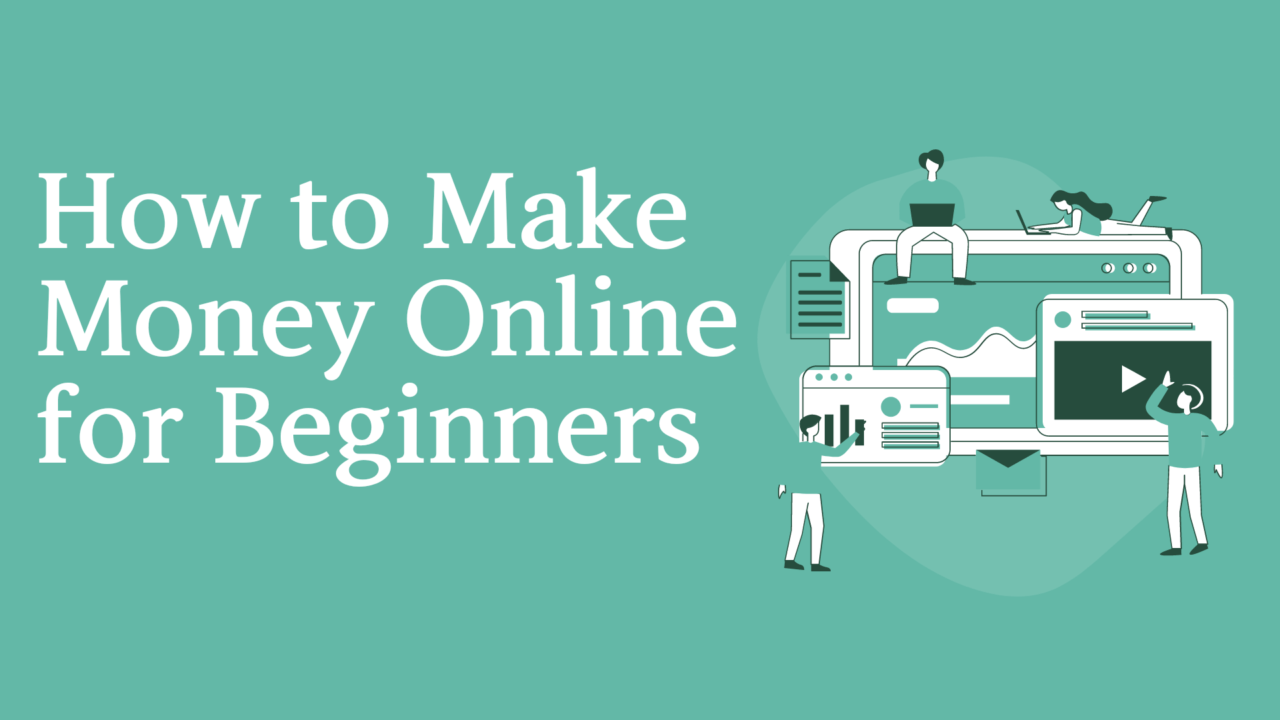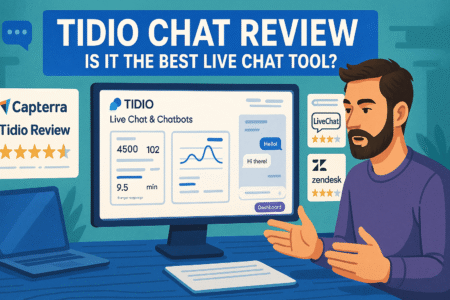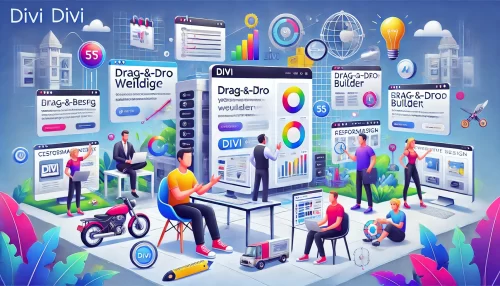Table of Contents
Discover the best tips for beginners on how to make money online. This guide will help you navigate various methods, ensuring you find the perfect fit for your skills and interests.
Affiliate Marketing: Earn Money by Promoting Products
Affiliate marketing is a great way to make money online by promoting products and earning commissions. By partnering with companies and promoting their products, you can generate income based on the sales you drive. This method is highly effective for beginners looking to monetize their online presence without creating their own products.
Most importantly, affiliate marketing requires strategic planning and consistent effort to see substantial results. I strongly believe that with the right approach and dedication, anyone can succeed in this field. Here’s how you can get started and optimize your affiliate marketing efforts.
Choose the Right Affiliate Programs
Selecting the right affiliate programs is crucial to your success in affiliate marketing. Look for programs that offer products relevant to your niche and have a good reputation. High commission rates and reliable payment methods are also important factors to consider.
My suggestion is to start with well-known affiliate networks like Awin, ShareASale, and CJ Affiliate. These platforms provide a wide range of products and offer tools to help you track your performance. Additionally, I recommend reading reviews and joining affiliate marketing forums to gather insights from other marketers.
I believe it’s beneficial to test different programs to see which ones resonate best with your audience. Keep track of the results and adjust your strategy based on what works. Building strong relationships with affiliate managers can also provide you with exclusive offers and better support.
Ultimately, the key is to be selective and choose programs that align with your values and provide genuine value to your audience. This approach will help you build credibility and trust, leading to long-term success in affiliate marketing.
Create Engaging Content to Attract Traffic
Creating engaging content is essential to attract and retain your audience. High-quality, informative content not only draws visitors to your site but also builds trust and credibility. Focus on producing articles, videos, and reviews that genuinely help your audience make informed decisions.
I suggest using a variety of content formats to keep your audience engaged. For example, write in-depth product reviews, create comparison guides, and share personal experiences with the products you promote. This variety will cater to different preferences and increase your chances of driving traffic.
In my opinion, consistency is key. Regularly updating your content and adding new posts will keep your site fresh and encourage repeat visits. Additionally, I believe using SEO best practices, such as optimizing your content for relevant keywords, will help improve your search engine rankings and attract more organic traffic.
Optimize Your Website for Better Conversions
Optimizing your website for conversions is critical to maximize your affiliate earnings. Start by ensuring your site is user-friendly, with a clean design and easy navigation. This helps visitors find what they’re looking for quickly and enhances their overall experience.
I recommend using clear and compelling calls to action (CTAs) to guide visitors towards making a purchase. For instance, include “Buy Now” or “Learn More” buttons strategically placed throughout your content. These CTAs should stand out and be easy to click.
My advice is to test different elements of your website, such as headlines, images, and CTAs, to see what works best. A/B testing can provide valuable insights into what drives conversions and help you make data-driven decisions. I also suggest monitoring your website’s performance using tools like Google Analytics to track user behavior and identify areas for improvement.
Track Your Performance and Adjust Strategies
Tracking your performance is essential to understand what’s working and what needs improvement. Use analytics tools to monitor key metrics such as click-through rates, conversion rates, and overall earnings. This data will help you make informed decisions and adjust your strategies accordingly.
I strongly believe in the importance of continuous learning and adaptation. The online landscape is constantly changing, so staying updated with the latest trends and best practices is crucial. Regularly review your performance data and be willing to experiment with new approaches.
My recommendation is to set clear goals and benchmarks to measure your progress. This will keep you motivated and focused on achieving your targets. Additionally, I point out that joining affiliate marketing communities and forums can provide valuable insights and support from fellow marketers.
Email Marketing: Build a Loyal Audience
Email marketing is a powerful way to build a loyal audience and generate consistent revenue. By connecting directly with your subscribers, you can nurture relationships, provide value, and drive conversions. This strategy is essential for businesses looking to establish a strong online presence.
Most importantly, email marketing allows you to stay top-of-mind with your audience, ensuring they engage with your content regularly. I believe that with the right approach, you can turn casual subscribers into dedicated customers who support your business.
Email Marketing Recommendations
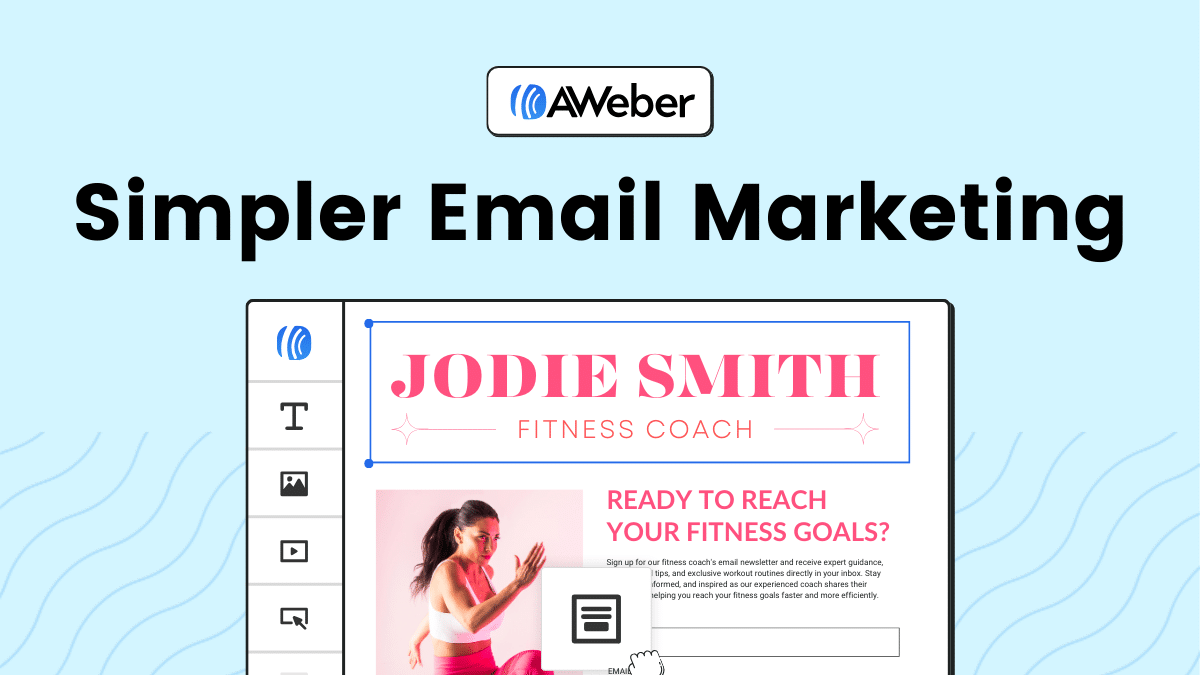 Aweber
| 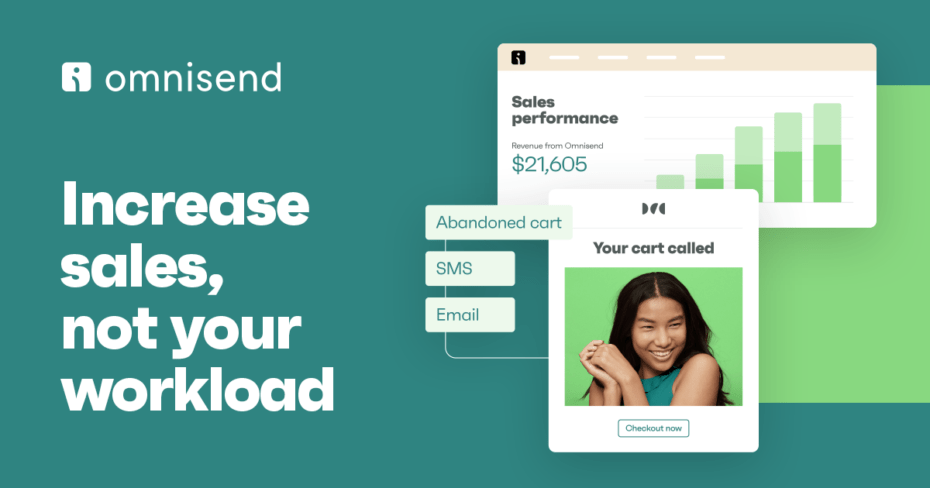 Omnisend
| 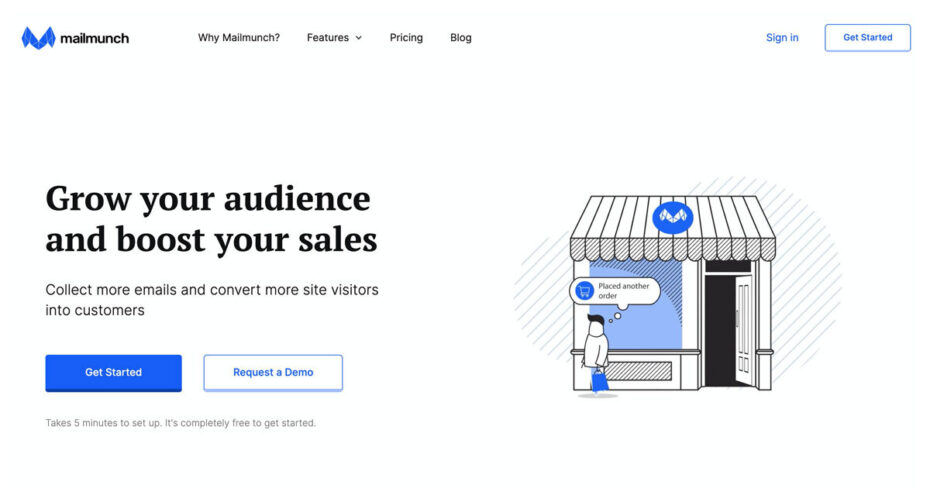 Mailmunch
|
Grow Your Email List with Targeted Leads
Growing your email list with targeted leads is the foundation of successful email marketing. Start by offering valuable incentives, such as free ebooks, discounts, or exclusive content, to encourage sign-ups. Ensure that your sign-up forms are easily accessible on your website and social media platforms.
My suggestion is to use lead magnets that resonate with your target audience. For example, if you run a fitness blog, offering a free workout plan can attract health-conscious subscribers. Additionally, I recommend promoting your sign-up forms through various channels, including social media ads and collaborations with influencers in your niche.
I advise you to segment your email list based on subscribers’ interests and behaviors. This allows you to send personalized content that resonates with different segments, increasing engagement and conversions. My recommendation is to regularly clean your email list by removing inactive subscribers to maintain a high deliverability rate.
Finally, it’s crucial to monitor the performance of your lead generation strategies. Track metrics like sign-up rates and engagement levels to understand what works best. This data will help you refine your approach and continually improve your email list growth efforts.
Craft Compelling Email Campaigns
Crafting compelling email campaigns is crucial for engaging your audience and driving action. Start by writing attention-grabbing subject lines that encourage recipients to open your emails. Once they open your email, provide valuable and relevant content that addresses their needs and interests.
I think using a mix of content types, such as educational articles, promotional offers, and personal stories, can keep your emails interesting. Additionally, I believe incorporating visually appealing elements like images and videos can enhance the overall experience for your subscribers.
I would say that personalizing your emails can significantly improve engagement. Use your subscribers’ names, recommend products based on their previous purchases, and tailor content to their preferences. My advice is to always include a clear call to action (CTA) that guides your readers on the next steps, whether it’s visiting your website, making a purchase, or downloading a resource.
Lastly, consistency in your email campaigns is vital. Ensure you maintain a regular sending schedule so your audience knows when to expect your emails. This predictability helps build trust and keeps your brand at the forefront of their minds.
Use Automation to Streamline Processes
Using automation to streamline your email marketing processes can save time and improve efficiency. Automation tools allow you to set up workflows that send emails based on specific triggers, such as sign-ups, purchases, or user behavior.
I suggest setting up welcome email sequences to introduce new subscribers to your brand and provide them with valuable information right from the start. This helps build a strong foundation for your relationship with them. Moreover, I recommend creating automated follow-up emails to re-engage subscribers who haven’t interacted with your emails recently.
My advice is to use automation to segment your audience and send targeted campaigns based on their actions and preferences. This ensures that your emails are always relevant and timely. Additionally, I point out that automating repetitive tasks, like sending order confirmations or birthday greetings, can free up time for you to focus on more strategic activities.
Finally, continually optimize your automation workflows. Regularly review their performance and make adjustments to improve their effectiveness. This iterative process ensures that your automated email campaigns remain impactful and relevant.
Analyze Results to Improve Engagement
Analyzing your email marketing results is essential for understanding what works and identifying areas for improvement. Use analytics tools to track key metrics, such as open rates, click-through rates, and conversion rates, to gauge the effectiveness of your campaigns.
I strongly believe in the importance of A/B testing different elements of your emails, such as subject lines, content, and CTAs, to see what resonates best with your audience. This data-driven approach can help you make informed decisions and optimize your campaigns for better results.
My recommendation is to regularly review your email performance and make adjustments based on the insights you gather. This continuous improvement process ensures that your email marketing efforts remain effective and relevant. Lastly, I advise you to stay updated with the latest email marketing trends and best practices to keep your strategies fresh and engaging.
Finally, don’t forget to seek feedback from your subscribers. Their input can provide valuable insights into what they like or dislike about your emails, helping you tailor your content to better meet their needs.
Blogging: Share Your Passion and Profit
Blogging is a fantastic way to share your passion with the world and make money online. By creating valuable content that resonates with your audience, you can turn your blog into a profitable venture. This guide will help you understand the key steps to successful blogging.
Most importantly, it’s essential to be consistent and patient. Building a successful blog takes time and effort, but with dedication, you can achieve your goals. I believe that focusing on quality and providing genuine value to your readers is the key to long-term success.
Select a Profitable Niche
Choosing a profitable niche is the first step in starting a successful blog. Your niche should be something you are passionate about and knowledgeable in, but it should also have a potential audience and monetization opportunities. Conduct thorough research to identify niches with high demand and low competition.
My suggestion is to use tools like Google Trends and keyword research tools to gauge the popularity of different niches. Additionally, I recommend looking at existing blogs in your area of interest to see what topics they cover and how they engage their audience.
I advise you to narrow down your niche to a specific subtopic to target a more focused audience. For instance, instead of a general fitness blog, consider focusing on home workouts for busy professionals. My recommendation is to choose a niche that aligns with your expertise and interests to maintain motivation and provide valuable insights to your readers.
Finally, ensure that your chosen niche has multiple monetization options. Look for affiliate programs, advertising opportunities, and potential for selling products or services. This will provide you with various revenue streams and increase your chances of making a profit from your blog.
Create High-Quality, SEO-Optimized Content
Creating high-quality, SEO-optimized content is crucial for attracting and retaining readers. Your content should be informative, engaging, and relevant to your audience. Use keyword research to identify the terms your audience is searching for and incorporate them naturally into your content.
I think it’s essential to focus on providing value rather than just ranking for keywords. Write comprehensive posts that answer your readers’ questions and solve their problems. Additionally, I believe that using multimedia elements like images, videos, and infographics can enhance the user experience and make your content more engaging.
My advice is to regularly update your blog with fresh content to keep your audience coming back for more. Consistency is key to building a loyal readership. I suggest creating a content calendar to plan and schedule your posts in advance, ensuring a steady flow of content.
Finally, don’t forget to optimize your on-page SEO elements. Use relevant keywords in your titles, headings, and meta descriptions. Ensure your blog is mobile-friendly and has fast loading times. These factors can significantly impact your search engine rankings and help you attract more organic traffic.
Monetize Your Blog with Ads and Sponsorships
Monetizing your blog with ads and sponsorships can provide a steady income stream. Display ads, such as those from Google AdSense, are a popular choice for many bloggers. These ads pay you based on the number of impressions or clicks they receive.
I recommend experimenting with different ad placements to see what works best for your audience. Some bloggers find success with ads in the sidebar, while others prefer in-content ads. Additionally, I advise you to balance ad placement to avoid overwhelming your readers with too many ads.
My suggestion is to also seek out sponsorship opportunities. Brands may be willing to pay you to promote their products or services to your audience. I believe that building a strong brand and an engaged audience can attract potential sponsors. Create a media kit that showcases your blog’s metrics and audience demographics to present to potential sponsors.
Lastly, diversify your income by offering sponsored posts or product reviews. My recommendation is to be transparent with your audience about sponsored content to maintain trust. Always disclose any paid partnerships and ensure that the products or services you promote align with your niche and audience interests.
Drive Traffic Through Social Media
Driving traffic to your blog through social media is an effective way to increase your audience and engagement. Social media platforms like Facebook, Twitter, Instagram, and Pinterest can help you reach a broader audience and promote your content.
I suggest creating a social media strategy that includes regular posting, engaging with your followers, and sharing valuable content. Use eye-catching images and compelling headlines to draw attention to your posts. Additionally, I recommend joining relevant groups and communities where you can share your blog posts and connect with like-minded individuals.
I believe that leveraging social media analytics can help you understand what type of content resonates with your audience. Monitor your engagement rates, click-through rates, and follower growth to refine your strategy. My advice is to focus on the platforms where your target audience is most active and tailor your content accordingly.
Finally, consider using social media advertising to boost your reach. Platforms like Facebook and Instagram offer targeted advertising options that allow you to reach specific demographics. My recommendation is to start with a small budget and test different ad creatives to see what works best for driving traffic to your blog.
Dropshipping: Start an Online Store with No Inventory
Dropshipping is an excellent way to start an online store without the hassle of managing inventory. By partnering with suppliers who handle stock and shipping, you can focus on marketing and growing your business. This model allows you to sell a wide range of products without significant upfront costs.
Most importantly, dropshipping offers flexibility and scalability. I believe that with the right strategies, you can build a successful dropshipping business that generates steady income. Here’s how to get started and optimize your dropshipping store.
Dropshipping Sites Recommendations
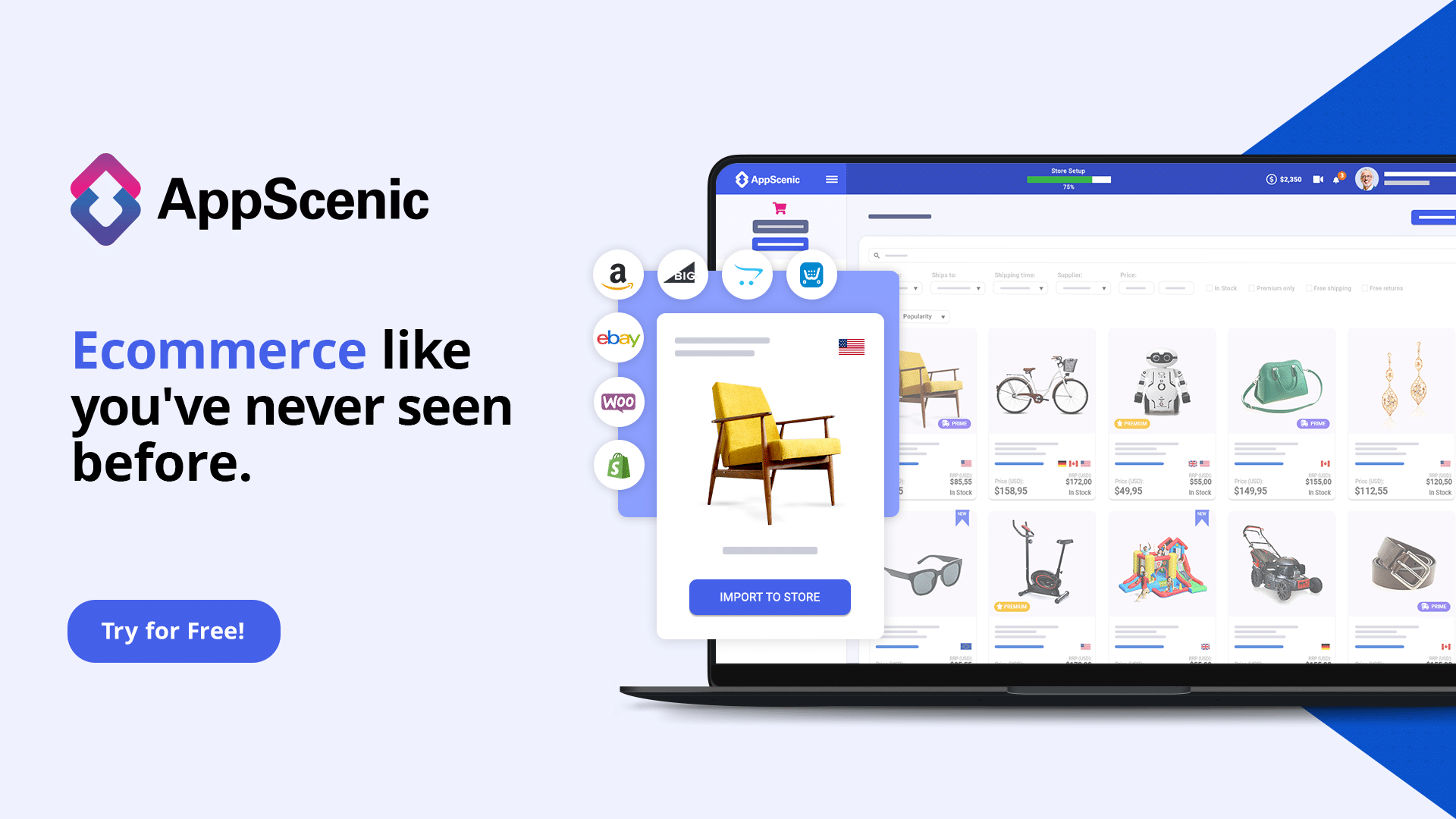 Appscenic
| 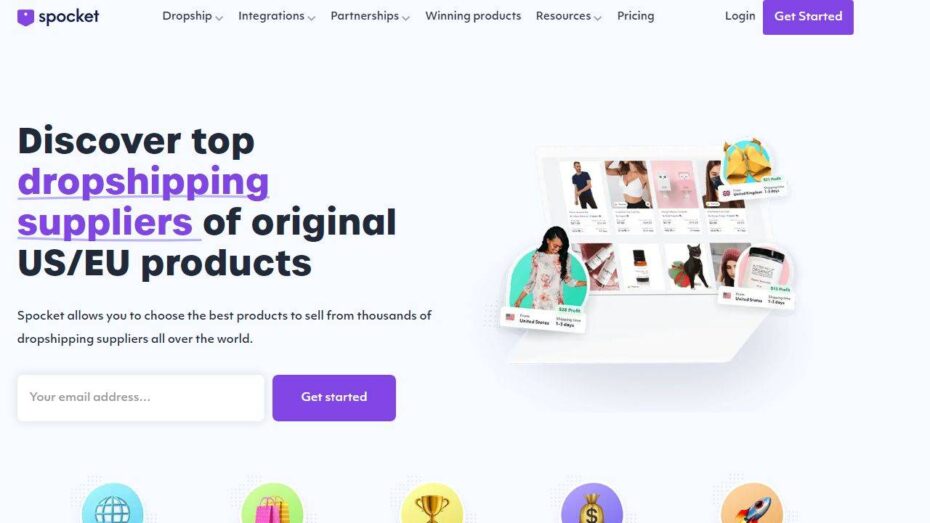 Spocket
|
Choose Reliable Suppliers
Choosing reliable suppliers is crucial for the success of your dropshipping business. Your suppliers will handle inventory and shipping, so it’s essential to work with those who offer quality products and reliable services. Research potential suppliers thoroughly and read reviews from other dropshippers.
My suggestion is to start with well-known platforms like AliExpress, Oberlo, or SaleHoo, which offer a wide range of products and have established reputations. Additionally, I recommend contacting suppliers directly to discuss terms, shipping times, and return policies to ensure they meet your standards.
I advise you to test the products yourself before listing them on your store. Order samples to check the quality and delivery times. My recommendation is to have backup suppliers for your best-selling products to avoid disruptions in case of stock shortages or other issues.
Finally, maintain good communication with your suppliers. Building a strong relationship can help you negotiate better terms and resolve any issues quickly. Consistent communication ensures that you and your suppliers are aligned, contributing to a smoother dropshipping process.
Set Up Your E-Commerce Website
Setting up your e-commerce website is the next step in starting your dropshipping business. Your website should be user-friendly, visually appealing, and optimized for conversions. Choose a reliable e-commerce platform like Shopify, WooCommerce, or BigCommerce to build your store.
I think it’s essential to create a professional-looking website that instills trust in your visitors. Use high-quality images, detailed product descriptions, and clear pricing information. Additionally, I believe that including customer reviews and testimonials can enhance credibility and encourage purchases.
My advice is to optimize your website for search engines to attract organic traffic. Use relevant keywords in your product titles, descriptions, and meta tags. I suggest setting up a blog to provide valuable content related to your niche, which can also improve your SEO and attract more visitors.
Finally, ensure that your website is mobile-friendly and has fast loading times. Many users shop on their mobile devices, so a responsive design is crucial. My recommendation is to test your website on different devices and browsers to ensure a seamless experience for all visitors.
Market Your Products Effectively
Marketing your products effectively is vital to driving traffic and sales to your dropshipping store. Utilize a mix of marketing strategies to reach a broader audience and promote your products. Social media marketing, influencer collaborations, and email marketing are powerful tools to boost your visibility.
I suggest starting with social media platforms like Facebook, Instagram, and Pinterest to showcase your products and engage with potential customers. Create eye-catching posts, run targeted ads, and interact with your audience to build a loyal following. Additionally, I recommend using influencer marketing to reach new audiences. Partner with influencers in your niche to promote your products to their followers.
I believe that email marketing is a highly effective way to nurture leads and drive repeat purchases. Collect email addresses through sign-up forms on your website and offer incentives like discounts or free resources. My advice is to send regular newsletters with updates, promotions, and valuable content to keep your audience engaged.
Lastly, I point out that running promotions and discounts can attract more customers to your store. Time-limited offers create a sense of urgency and encourage quick purchases. Experiment with different marketing tactics to see what resonates best with your audience and drives the most sales.
Provide Excellent Customer Service
Providing excellent customer service is key to building a successful dropshipping business. Happy customers are more likely to become repeat buyers and recommend your store to others. Make sure to respond promptly to inquiries and address any issues professionally.
I strongly believe that offering multiple channels for customer support, such as email, live chat, and phone, can enhance customer satisfaction. Ensure that your contact information is easily accessible on your website. Additionally, I recommend having a comprehensive FAQ section to address common questions and concerns.
My advice is to handle returns and refunds efficiently. Clear and fair return policies help build trust and reassure customers. I suggest working closely with your suppliers to streamline the return process and resolve any issues quickly.
Finally, I point out that gathering feedback from your customers is valuable for improving your business. Encourage reviews and testimonials to understand what your customers like and where you can improve. Use this feedback to enhance your products and services continually.
Freelancing: Offer Your Skills to Clients Worldwide
Freelancing is a fantastic way to offer your skills to clients across the globe, providing flexibility and the potential for significant income. By leveraging your expertise, you can work on diverse projects, build a robust client base, and enjoy the freedom of being your own boss.
Most importantly, freelancing allows you to control your workload and choose projects that align with your interests and strengths. I believe that with the right approach, anyone can establish a successful freelancing career and enjoy the benefits of this dynamic work style.
Identify Your Marketable Skills
Identifying your marketable skills is the first step to becoming a successful freelancer. Assess your abilities and determine which ones are in high demand. This could include writing, graphic design, programming, digital marketing, or any other skill that businesses need.
I recommend focusing on skills that you excel in and enjoy doing. This will not only make your work more enjoyable but also increase your chances of delivering high-quality results. Additionally, I advise conducting market research to understand the demand for your skills and identify potential niches where you can stand out.
My suggestion is to continuously develop and refine your skills. Taking online courses, attending workshops, and staying updated with industry trends can enhance your expertise and make you more competitive. I believe that showcasing a broad and deep skill set can attract more clients and higher-paying projects.
Finally, consider acquiring certifications in your field. Certifications can validate your skills and increase your credibility with potential clients. My recommendation is to highlight these credentials in your portfolio and profiles to demonstrate your expertise.
Build a Professional Portfolio
Building a professional portfolio is crucial for showcasing your work and attracting clients. Your portfolio should highlight your best projects, demonstrating your skills and the value you can provide. Include a variety of work samples that reflect your range and expertise.
I advise starting with projects you have completed for previous employers, personal projects, or volunteer work. If you’re new to freelancing, consider offering your services at a reduced rate or even for free to build up your portfolio. My recommendation is to ensure that each portfolio item includes a brief description of the project, your role, and the results achieved.
Most importantly, keep your portfolio updated with your latest work. As you complete new projects, add them to your portfolio to reflect your current skills and capabilities. I suggest organizing your portfolio by category or industry to make it easy for potential clients to find relevant examples.
Finally, I believe that including testimonials from satisfied clients can significantly enhance your portfolio. Testimonials provide social proof and build trust with potential clients. Reach out to previous clients for feedback and permission to include their testimonials in your portfolio.
Use Freelancing Platforms to Find Clients
Using freelancing platforms is an effective way to find clients and secure projects. Websites like Upwork, Freelancer, and Fiverr connect freelancers with clients looking for various services. Create a compelling profile that highlights your skills, experience, and portfolio.
I think it’s important to take the time to craft a strong profile. Include a professional photo, a detailed description of your services, and any relevant certifications or qualifications. Additionally, I recommend setting competitive rates based on your experience and the market rates for your skills.
My advice is to actively bid on projects that match your expertise. Tailor your proposals to each project, addressing the client’s needs and explaining how you can provide value. I suggest starting with smaller projects to build your reputation and gain positive reviews.
Lastly, I point out that many freelancing platforms offer tools to help you manage your work, such as time tracking, invoicing, and project management features. Utilize these tools to streamline your workflow and provide a professional experience for your clients.
Deliver High-Quality Work to Secure Repeat Business
Delivering high-quality work is essential for building a successful freelancing career. Consistently meeting or exceeding client expectations can lead to repeat business, referrals, and positive reviews. Focus on understanding the client’s requirements and delivering results that align with their goals.
I strongly believe that clear communication is key to successful freelancing. Keep your clients informed about your progress and address any questions or concerns promptly. Additionally, I suggest setting realistic deadlines and adhering to them to build trust and reliability.
My recommendation is to go the extra mile to add value to your projects. Whether it’s suggesting improvements or delivering additional features, showing that you care about the client’s success can set you apart. I advise asking for feedback upon project completion to understand areas for improvement and demonstrate your commitment to quality.
Finally, I would say that maintaining a professional relationship with your clients is crucial. Even after a project ends, follow up occasionally to stay top-of-mind for future opportunities. Building long-term relationships can provide a steady stream of work and help you grow your freelancing business.
Online Courses: Teach and Earn Passive Income
Creating online courses is a powerful way to share your expertise and earn passive income. By developing comprehensive courses, you can teach valuable skills to a global audience while generating a steady revenue stream. This guide will help you understand the key steps to successfully launching your online course.
Most importantly, online courses allow you to reach learners from all over the world, expanding your impact and income potential. I believe that with the right approach, you can create high-quality courses that provide genuine value to your students.
Choose a Profitable Course Topic
Choosing a profitable course topic is the first step in creating a successful online course. Your topic should be something you are knowledgeable about and passionate about, but it should also have a strong demand. Conduct market research to identify topics that are trending and have a high potential for enrollment.
I recommend using tools like Google Trends, Udemy, and Coursera to gauge the popularity of various topics. Additionally, I advise joining online forums and communities related to your field to understand what potential learners are interested in and what gaps exist in current offerings.
Most importantly, focus on a niche where you can provide unique insights or specialized knowledge. This will help you stand out in a crowded market and attract a dedicated audience. My suggestion is to create a detailed outline of your course content to ensure it covers all necessary aspects comprehensively.
Finally, test your course idea with a small group of potential students to get feedback and gauge interest. This can help you refine your content and ensure there is a market for your course before you invest significant time and resources.
Create Comprehensive Course Content
Creating comprehensive course content is essential for providing value to your students and ensuring they achieve their learning goals. Your content should be well-organized, engaging, and easy to follow. Use a mix of video lectures, written materials, quizzes, and interactive elements to cater to different learning styles.
I think it’s important to start with a clear outline and break down your content into manageable modules. Each module should cover a specific topic in depth and include practical examples and exercises. Additionally, I believe using high-quality visuals and professional-grade video production can enhance the learning experience.
My advice is to incorporate real-world applications and case studies to make the content more relatable and practical. This helps students understand how to apply the knowledge in real-life situations. I suggest including regular assessments and feedback opportunities to track progress and keep students engaged.
Finally, ensure that your content is accessible on multiple devices, including smartphones and tablets. My recommendation is to use a reputable online course platform like Teachable, Thinkific, or Udemy, which offer built-in tools for creating and managing course content effectively.
Market Your Course to Your Audience
Marketing your course effectively is crucial to attracting students and achieving enrollment goals. Utilize a mix of online marketing strategies to reach your target audience and promote your course. Social media marketing, email campaigns, and content marketing are powerful tools to drive traffic and conversions.
I suggest starting with a well-designed landing page that highlights the benefits of your course and includes testimonials from early students. This page should have a clear call to action and make it easy for visitors to enroll. Additionally, I recommend leveraging social media platforms like Facebook, Instagram, and LinkedIn to create awareness and engage with potential students.
I believe that email marketing can be particularly effective in nurturing leads and converting them into students. Build an email list by offering free resources or webinars related to your course topic. My advice is to send regular updates and valuable content to your subscribers to keep them interested and encourage enrollment.
Finally, consider using paid advertising to boost your reach. Platforms like Google Ads and Facebook Ads allow you to target specific demographics and interests, maximizing your marketing efforts. My recommendation is to start with a small budget and test different ad creatives to see what resonates best with your audience.
Engage Students for Better Reviews
Engaging your students is key to ensuring they have a positive learning experience and leave good reviews. Active engagement helps students stay motivated and increases the likelihood of them recommending your course to others. Use interactive elements and foster a sense of community to keep students involved.
I strongly believe in the importance of regular communication with your students. Provide timely feedback on assignments and be available to answer questions and provide support. Additionally, I suggest creating discussion forums or social media groups where students can interact with each other and share insights.
My recommendation is to include live sessions or Q&A webinars to address any concerns and provide additional value. These sessions can help clarify complex topics and make the learning experience more dynamic. I advise incorporating gamification elements like badges and certificates to motivate students and recognize their achievements.
Finally, I point out that asking for feedback throughout the course can help you identify areas for improvement and make necessary adjustments. Encourage students to leave reviews and testimonials upon completion. Positive reviews can significantly boost your course’s credibility and attract more enrollments in the future.
Digital Products: Create and Sell Your Own Products
Creating and selling digital products is a lucrative way to earn passive income while leveraging your expertise. Digital products, such as ebooks, online courses, software, and templates, have low production costs and can be distributed easily to a global audience. This guide will help you understand the essential steps to successfully create and sell your own digital products.
Most importantly, digital products allow you to scale your business without the limitations of physical inventory. I believe that by focusing on quality and addressing market needs, you can build a successful digital product business that generates consistent revenue.
Identify a Need in the Market
Identifying a need in the market is the first step in creating a successful digital product. Conduct thorough market research to understand what problems your target audience faces and what solutions they are seeking. This will help you create a product that addresses a genuine need and has high demand.
I recommend using tools like Google Trends, social media, and online forums to gather insights about market trends and customer pain points. Additionally, I suggest analyzing competitors to see what products are currently available and identify gaps that your product can fill.
Most importantly, validate your product idea before investing significant time and resources. My suggestion is to create a minimum viable product (MVP) and get feedback from a small group of potential customers. This can help you refine your product and ensure it meets market needs.
Finally, consider surveying your existing audience if you have one. Ask them directly what challenges they face and what type of digital products they would find valuable. This direct feedback can provide valuable insights and guide your product development process.
Develop High-Quality Digital Products
Developing high-quality digital products is crucial for providing value to your customers and ensuring repeat business. Your product should be well-designed, easy to use, and offer clear benefits to the user. Pay attention to detail and ensure that your product stands out from the competition.
I think it’s essential to invest in professional design and user experience. High-quality visuals and a seamless user interface can significantly enhance the perceived value of your digital product. Additionally, I recommend thoroughly testing your product to identify and fix any bugs or issues before launch.
My advice is to gather feedback during the development process. This can help you make necessary adjustments and ensure that the final product meets customer expectations. I suggest working with a small group of beta testers who can provide insights and suggestions for improvement.
Finally, keep your product updated with new features and improvements based on customer feedback. This not only enhances the product’s value but also shows your commitment to providing the best possible experience for your users. My recommendation is to create a roadmap for future updates and communicate this to your customers.
Set Up a Sales Platform
Setting up a sales platform is the next step in selling your digital products. Choose a reliable and user-friendly platform that makes it easy for customers to purchase and access your products. Popular options include Shopify, Gumroad, and Sellfy, which offer a range of features to support digital product sales.
I suggest creating a professional-looking sales page that clearly explains the benefits of your product and includes testimonials from satisfied customers. This can help build trust and encourage conversions. Additionally, I recommend offering multiple payment options to make the purchasing process as convenient as possible for your customers.
My recommendation is to use a platform that provides detailed analytics so you can track sales performance and understand customer behavior. This data can help you optimize your sales strategy and improve your product offerings. I advise integrating email marketing tools to follow up with customers and encourage repeat purchases.
Finally, ensure that your sales platform is secure and protects customer data. This is crucial for building trust and maintaining a positive reputation. My advice is to choose a platform that complies with relevant data protection regulations and offers robust security features.
Use Marketing Strategies to Drive Sales
Using effective marketing strategies is essential to drive sales and grow your digital product business. Utilize a mix of online marketing techniques to reach a broader audience and promote your products. Content marketing, social media marketing, and email campaigns are powerful tools to boost visibility and conversions.
I recommend starting with a content marketing strategy that includes blog posts, videos, and infographics related to your product. This can help attract organic traffic and establish you as an authority in your niche. Additionally, I suggest leveraging social media platforms like Facebook, Instagram, and LinkedIn to engage with your audience and showcase your products.
I believe that email marketing is particularly effective for nurturing leads and driving repeat sales. Build an email list by offering free resources or exclusive discounts to subscribers. My advice is to send regular newsletters with valuable content and product updates to keep your audience engaged.
Finally, consider using paid advertising to increase your reach and drive targeted traffic to your sales page. Platforms like Google Ads and Facebook Ads offer advanced targeting options that can help you reach potential customers more effectively. My recommendation is to start with a small budget, test different ad creatives, and optimize based on performance data.
Web Development: Build Websites for Clients
Web development is a highly sought-after skill that allows you to build websites for clients and create a profitable business. By mastering web development, you can offer valuable services to businesses and individuals looking to establish a strong online presence. This guide will help you understand the essential steps to succeed in web development.
Most importantly, web development provides flexibility and the opportunity to work on diverse projects. I believe that with dedication and the right strategies, you can build a successful career in web development, helping clients achieve their online goals.
Web Hosting Recommendations
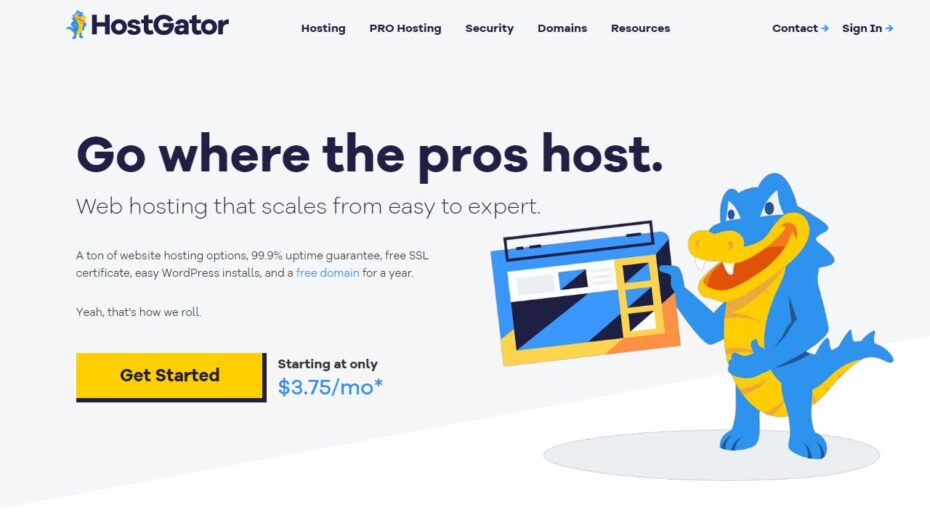 Hostgator
| 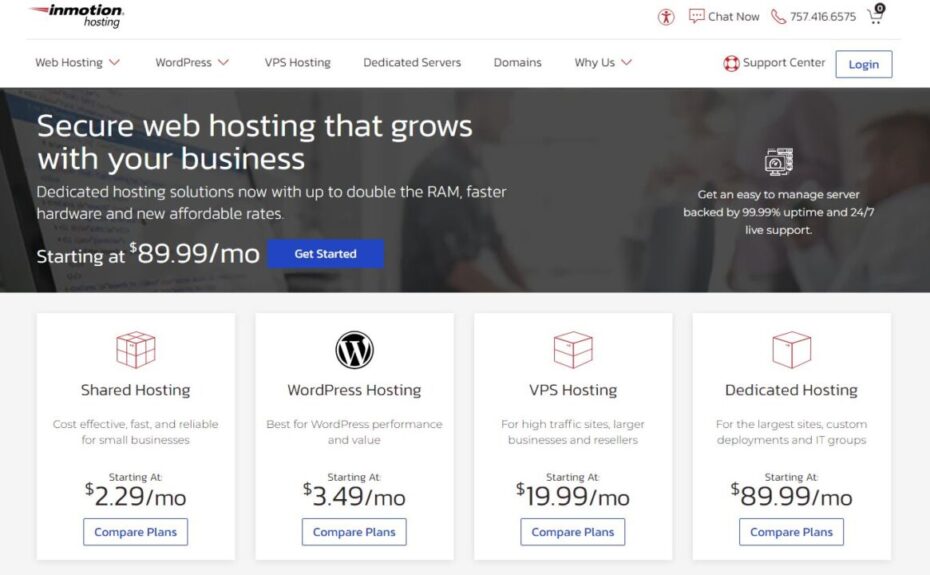 Inmotion
| 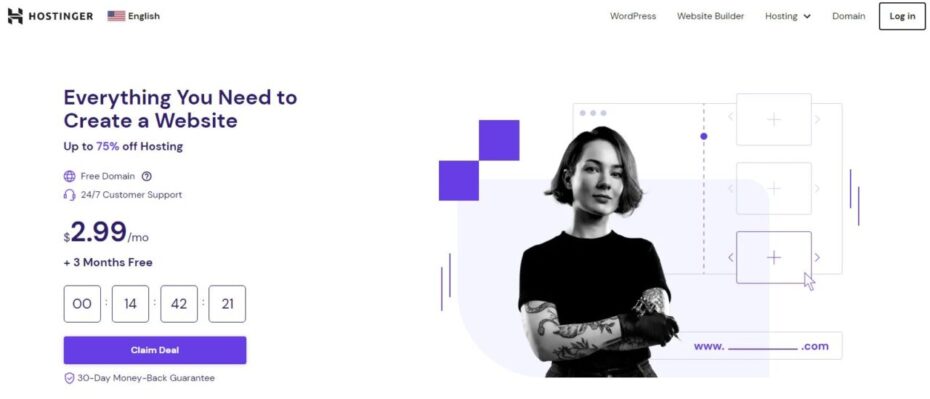 Hostinger
|
Learn Essential Web Development Skills
Learning essential web development skills is the first step to becoming a successful web developer. Start with the basics of HTML, CSS, and JavaScript, which are the building blocks of web development. These languages will enable you to create and style web pages, making them interactive and user-friendly.
I recommend using online resources like freeCodeCamp, Codecademy, and Coursera to learn these skills. Additionally, I advise practicing by building small projects and experimenting with different design elements to gain hands-on experience.
Most importantly, staying updated with the latest web development trends and technologies is crucial. My suggestion is to follow industry blogs, participate in online communities, and take advanced courses to continuously improve your skills. This will help you stay competitive and provide the best services to your clients.
Finally, consider learning backend development skills such as PHP, Python, or Ruby, and familiarize yourself with databases like MySQL or MongoDB. My recommendation is to become proficient in a popular web development framework like React, Angular, or Django, which can streamline your development process and make you more versatile.
Create a Portfolio Showcasing Your Work
Creating a portfolio showcasing your work is essential to attract clients and demonstrate your expertise. Your portfolio should highlight your best projects, showcasing a variety of skills and design styles. Include detailed descriptions of each project, explaining your role and the technologies used.
I think it’s important to start with personal or volunteer projects if you’re new to web development. This will help you build a portfolio even without professional experience. Additionally, I believe that including live links to the websites you’ve developed can give potential clients a better sense of your capabilities.
My advice is to make your portfolio visually appealing and easy to navigate. Use a clean, professional design that reflects your skills as a web developer. I suggest updating your portfolio regularly with new projects to keep it current and showcase your growth.
Finally, consider adding testimonials from clients or collaborators to your portfolio. I strongly believe that positive feedback can enhance your credibility and attract more clients. Reach out to previous clients for reviews and include these endorsements prominently in your portfolio.
Find Clients Through Networking and Job Boards
Finding clients through networking and job boards is a key strategy for building your web development business. Start by leveraging your existing network, including friends, family, and professional connections, to find potential clients. Attend industry events, webinars, and meetups to expand your network and connect with potential clients.
I recommend joining online communities and forums related to web development. Platforms like LinkedIn, Reddit, and Stack Overflow can be valuable for networking and finding job opportunities. Additionally, I advise creating a professional profile on freelancing platforms like Upwork, Freelancer, and Fiverr to reach a broader audience.
Most importantly, actively applying to job postings on job boards can help you find web development projects. My suggestion is to use sites like Indeed, Glassdoor, and AngelList, which regularly feature web development jobs. Tailor your applications to each posting and highlight your relevant skills and experience.
Finally, consider offering free consultations or small projects to showcase your skills and build relationships with potential clients. I believe this approach can lead to larger projects and long-term collaborations. My advice is to always deliver high-quality work and maintain a professional attitude to build a positive reputation in the industry.
Offer Ongoing Support and Maintenance
Offering ongoing support and maintenance is crucial for retaining clients and ensuring the long-term success of the websites you build. Many clients will need assistance with updates, troubleshooting, and enhancements after the initial development is complete. Providing these services can create additional revenue streams and strengthen client relationships.
I suggest setting up maintenance contracts with your clients. These contracts can include regular updates, security checks, and performance optimizations. Additionally, I recommend offering different levels of support packages to cater to varying client needs and budgets.
Most importantly, being responsive and reliable is key to providing excellent support. I advise establishing clear communication channels and response times to manage client expectations effectively. My recommendation is to use project management tools like Trello or Asana to track support tasks and ensure timely completion.
Finally, continually educating your clients about best practices and new developments in web technology can add value to your service. I strongly believe that proactive communication and regular updates can enhance client satisfaction and loyalty. My advice is to position yourself as a trusted partner who is invested in their long-term success.


